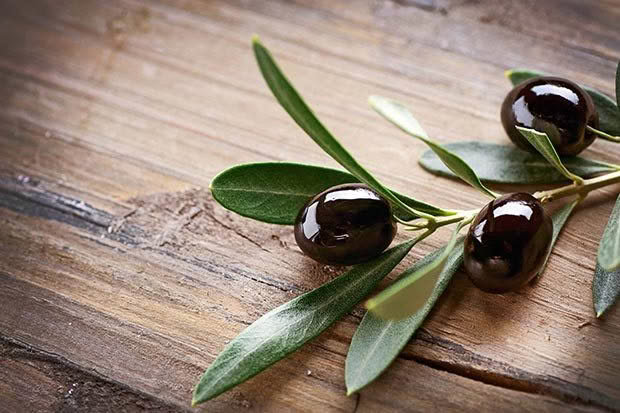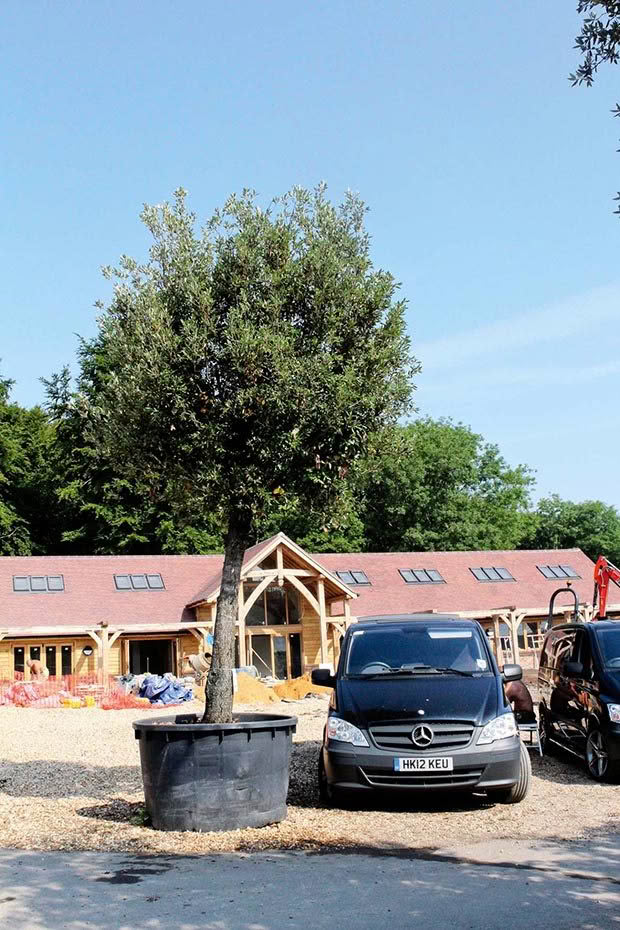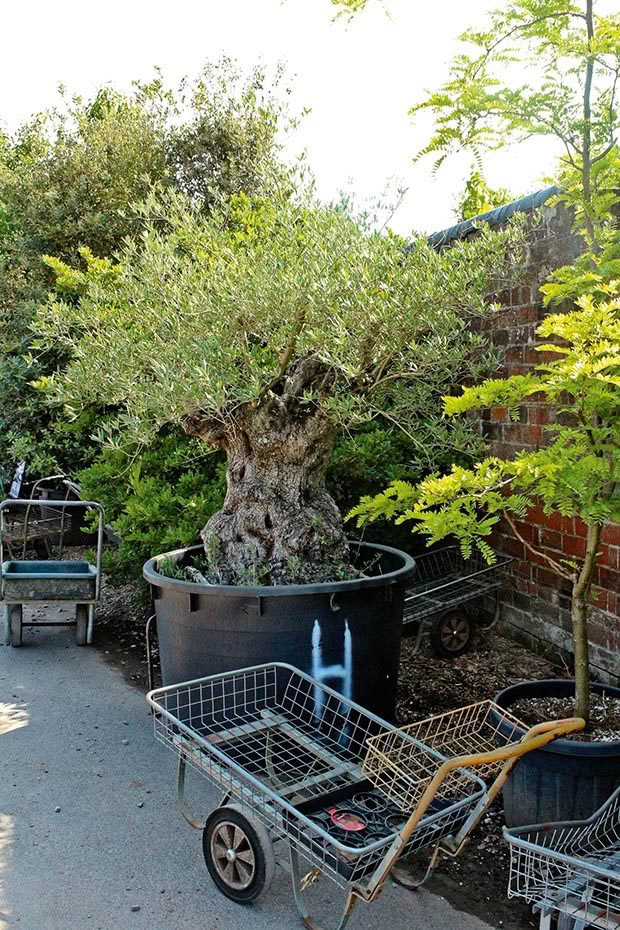The secret to growing olives in cold weather

There’s a great way to grow olive trees even when your place gets really cold.
Words: Ben Gaia
Hampshire’s Test Valley in Southern England has good soils, well-drained hillsides, long cold winters, hot dry summers, and sometimes it rains unexpectedly for two years straight. It could be New Zealand, particularly the east of this country, well away from white-tipped mountains. The only difference is its pixie-like thatched cottages.
Longstock Nursery holds the UK’s national Buddleia collection which means colourful butterflies flit all around the flower-filled nursery rows. The nursery is in a walled garden, an old brick and flint wall up to three metres high, topped with red clay tile roof reminiscent of China or Japan. There is an impressive kiwifruit vine covered in flower buds hanging over a large dining area outside.
Shelter is everything. This is a latitude nearer to the North Pole than Bluff is to the South, but you’d be amazed at what will grow in a sheltered, sun-washed dell behind this Great Wall of Hampshire. With a southerly aspect and a wall like this, the gardeners have produced the odd lemon in the past, although the manager ruefully admitted that citrus would be a full time job so they had given up.

But the large fig and olive trees for sale in the ‘Big Landscape Grade’ department are out of this world.
The UK is practically attached to Europe and you can drive to Italy or Spain and buy someone’s old twisty olive tree, dig it up and drive it home. Many Britons holiday in Spain and the olive groves hold memories of warmth, wine and romance. Put all this together and huge bonsai olive trees are big business if your climate is mild enough.
Everybody wants an olive grove – come on, admit it, you want one – but we don’t all live in Tuscany. The real limiting factor for olives is frost. Below -5°C and your young orchard will freeze to death. A medium-aged orchard will lose its crop.

A potted olive tree, retailing in the UK for the eye-watering price of NZ$3000.
Many olive trees in NZ were planted 20+ years ago in a fit of optimism that we were the ‘new’ Italy. Unfortunately we aren’t, but if you are near the sea on a block anywhere north of Christchurch, facing north with good drainage, a daily irrigation set-up and a warm ripening summer, you can produce olives for home pickling. Manzanilla and Greek Koroneiki are the best two in West Coast trials, but new Tuscan varieties handle more rain and cooler winters.
Big specimen olive trees can be found in specialist nurseries. You will pay lots for large containerised specimens, and they won’t look as gnarly as the one I saw in Hampshire (see picture above left), but a good nursery can get some twists and folds into a big 15 year old olive to start the ball rolling. These are living sculptures, a work in progress, and worth the money for their beauty and timeless feeling of ancient civilisation.

A very old olive tree, bonsai-style.
If you could get your hands on a 4m, 200 year old ancient potted Dryad like the one pictured above, right (retailing at $3000+), I reckon the frost wouldn’t touch it, particularly if it had been raised in Hampshire, where last year they had snow knee-deep for days. In other words there’s hope for us all if we’re within that northern growing region.
Unfortunately, any hint of a -8°C frost when the water pipes freeze up, and you’ll have to accept that your olives will always come from a delicatessen.
ABOUT BEN
Ben Gaia grows trees for wood and fruit in extreme climate areas of the west coast of the South Island.
MORE HERE
David Walshaw knew nothing about horticulture when he traded city life to grow olives
Love this story? Subscribe now!
 This article first appeared in NZ Lifestyle Block Magazine.
This article first appeared in NZ Lifestyle Block Magazine.
